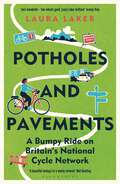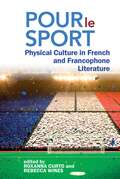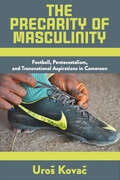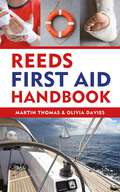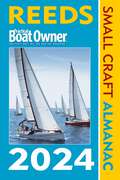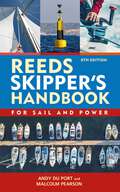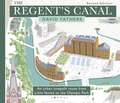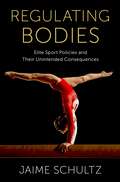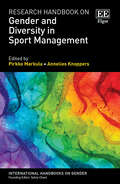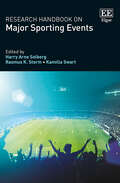- Table View
- List View
Paralympic shooting (Large Print)
There are three images on this page: a competition air rifle, a competitor taking aim with an air rifle and a competitor taking aim with an air pistol. Each image has a dashed line image border. There is a locator dot shown, which will be at the top left of the page when the image is the correct way up. A competition air rifle - This image stretches across the top of the page. It shows a competition air rifle seen from the side and pointing to the right. On the bottom left of the image is the rifle's stock. This is the part of the gun that rests on a user's shoulder. On this model, the stock is made up of many parts that can be adjusted to suit the individual's body shape. To the right of the stock is the gun's handgrip and right again the small lever that is the trigger. Up the page from the handgrip and the trigger is the rear sight. This is a device to help accurately aim the gun at a target. To the right of this is the barrel of the gun and down the page is the reservoir that contains the gas used to propel the pellet down the barrel to the right. At the far right of the image are the front sight and the muzzle of the gun, where the pellet leaves the gun when it is fired.Competitor taking aim with an air rifle - This image is on the bottom left of the page. It shows a competitor taking aim at a target beyond the image border to the right. He is seen from the side and facing to the right. His head is in the left centre of the image facing to the right so only one eye can be found. Part of his face is obscured by the stock of his rifle. His visible eye is looking through the sight of the gun slightly to the right. Down the page from his head, one of his hands can be found, with a finger on the gun's trigger ready to fire. Further down is his elbow and part of the wheelchair he is sitting in. Up and to the right you can find his other arm, with his hand holding the gun's barrel. Further right is the muzzle of the gun. Competitor taking aim with an air pistol - This image is on the bottom right of the page. It shows a competitor sitting on a stool and taking aim with an air pistol at a target beyond the image border to the left. He has both legs amputated at the upper thigh. The competitor's head is in the top right of the image, facing to the left so that only one of his eyes can be found. He is wearing ear protectors. One of his arms extends horizontally to the left, with his hand holding the gun, aimed to the left. Down from his head is the competitor's chest with his other arm to right leading down the page to his hand, which is resting on his lap. Further down the page is the seat of the stool. The legs of the stool cannot be found as they are past the image border.
Paralympic shooting (UEB Contracted)
There are three images on this page: a competition air rifle, a competitor taking aim with an air rifle and a competitor taking aim with an air pistol. Each image has a dashed line image border. There is a locator dot shown, which will be at the top left of the page when the image is the correct way up. A competition air rifle - This image stretches across the top of the page. It shows a competition air rifle seen from the side and pointing to the right. On the bottom left of the image is the rifle's stock. This is the part of the gun that rests on a user's shoulder. On this model, the stock is made up of many parts that can be adjusted to suit the individual's body shape. To the right of the stock is the gun's handgrip and right again the small lever that is the trigger. Up the page from the handgrip and the trigger is the rear sight. This is a device to help accurately aim the gun at a target. To the right of this is the barrel of the gun and down the page is the reservoir that contains the gas used to propel the pellet down the barrel to the right. At the far right of the image are the front sight and the muzzle of the gun, where the pellet leaves the gun when it is fired.Competitor taking aim with an air rifle - This image is on the bottom left of the page. It shows a competitor taking aim at a target beyond the image border to the right. He is seen from the side and facing to the right. His head is in the left centre of the image facing to the right so only one eye can be found. Part of his face is obscured by the stock of his rifle. His visible eye is looking through the sight of the gun slightly to the right. Down the page from his head, one of his hands can be found, with a finger on the gun's trigger ready to fire. Further down is his elbow and part of the wheelchair he is sitting in. Up and to the right you can find his other arm, with his hand holding the gun's barrel. Further right is the muzzle of the gun. Competitor taking aim with an air pistol - This image is on the bottom right of the page. It shows a competitor sitting on a stool and taking aim with an air pistol at a target beyond the image border to the left. He has both legs amputated at the upper thigh. The competitor's head is in the top right of the image, facing to the left so that only one of his eyes can be found. He is wearing ear protectors. One of his arms extends horizontally to the left, with his hand holding the gun, aimed to the left. Down from his head is the competitor's chest with his other arm to right leading down the page to his hand, which is resting on his lap. Further down the page is the seat of the stool. The legs of the stool cannot be found as they are past the image border.
Paralympic shooting (UEB Uncontracted)
There are three images on this page: a competition air rifle, a competitor taking aim with an air rifle and a competitor taking aim with an air pistol. Each image has a dashed line image border. There is a locator dot shown, which will be at the top left of the page when the image is the correct way up. A competition air rifle - This image stretches across the top of the page. It shows a competition air rifle seen from the side and pointing to the right. On the bottom left of the image is the rifle's stock. This is the part of the gun that rests on a user's shoulder. On this model, the stock is made up of many parts that can be adjusted to suit the individual's body shape. To the right of the stock is the gun's handgrip and right again the small lever that is the trigger. Up the page from the handgrip and the trigger is the rear sight. This is a device to help accurately aim the gun at a target. To the right of this is the barrel of the gun and down the page is the reservoir that contains the gas used to propel the pellet down the barrel to the right. At the far right of the image are the front sight and the muzzle of the gun, where the pellet leaves the gun when it is fired.Competitor taking aim with an air rifle - This image is on the bottom left of the page. It shows a competitor taking aim at a target beyond the image border to the right. He is seen from the side and facing to the right. His head is in the left centre of the image facing to the right so only one eye can be found. Part of his face is obscured by the stock of his rifle. His visible eye is looking through the sight of the gun slightly to the right. Down the page from his head, one of his hands can be found, with a finger on the gun's trigger ready to fire. Further down is his elbow and part of the wheelchair he is sitting in. Up and to the right you can find his other arm, with his hand holding the gun's barrel. Further right is the muzzle of the gun. Competitor taking aim with an air pistol - This image is on the bottom right of the page. It shows a competitor sitting on a stool and taking aim with an air pistol at a target beyond the image border to the left. He has both legs amputated at the upper thigh. The competitor's head is in the top right of the image, facing to the left so that only one of his eyes can be found. He is wearing ear protectors. One of his arms extends horizontally to the left, with his hand holding the gun, aimed to the left. Down from his head is the competitor's chest with his other arm to right leading down the page to his hand, which is resting on his lap. Further down the page is the seat of the stool. The legs of the stool cannot be found as they are past the image border.
Paralympic sitting volleyball (Large Print)
This page has three images on it: a player sitting and serving the ball, a player about to return the ball, and a diagram showing the layout of a volleyball court. Members of the team have mixed disabilities. Players must keep one buttock on the ground during an attack. Each image has a dashed line image border. There is a locator dot shown, which will be at the top left of the page when the image is the correct way up. Player serving the ball - The image on the top left of the page shows a player seen from the side, serving the ball. She is sitting facing right. In the top left corner of the image, she has her arm held up, ready to strike the ball in the top centre. Her other arm is down from the ball. She has just thrown the ball up to serve. Further down the page are the player's body and her leg on the ground stretched out to the right. Player about to return the ball - This image, at the bottom left of the page, shows a player seen from above, lying on his back about to strike the ball in the top right corner. Down and left from the ball are the player's hands. Further down and left are his head, his body and his legs. His leg on the right has been amputated above the knee and his leg to the left, below the knee. Diagram of volleyball court - This diagram on the right of the page shows the volleyball court and the six members of each team. The players are represented here by large dots and crosses. The net is set to 1.15 metres high for men's matches and 1.05 metres for women. It is shown as a heavy dashed line and extends horizontally across the centre of the diagram. Above and below this are the attack lines, two metres from the net. The court is 6 metres wide and 10 metres long.
Paralympic sitting volleyball (UEB Contracted)
This page has three images on it: a player sitting and serving the ball, a player about to return the ball, and a diagram showing the layout of a volleyball court. Members of the team have mixed disabilities. Players must keep one buttock on the ground during an attack. Each image has a dashed line image border. There is a locator dot shown, which will be at the top left of the page when the image is the correct way up. Player serving the ball - The image on the top left of the page shows a player seen from the side, serving the ball. She is sitting facing right. In the top left corner of the image, she has her arm held up, ready to strike the ball in the top centre. Her other arm is down from the ball. She has just thrown the ball up to serve. Further down the page are the player's body and her leg on the ground stretched out to the right. Player about to return the ball - This image, at the bottom left of the page, shows a player seen from above, lying on his back about to strike the ball in the top right corner. Down and left from the ball are the player's hands. Further down and left are his head, his body and his legs. His leg on the right has been amputated above the knee and his leg to the left, below the knee. Diagram of volleyball court - This diagram on the right of the page shows the volleyball court and the six members of each team. The players are represented here by large dots and crosses. The net is set to 1.15 metres high for men's matches and 1.05 metres for women. It is shown as a heavy dashed line and extends horizontally across the centre of the diagram. Above and below this are the attack lines, two metres from the net. The court is 6 metres wide and 10 metres long.
Paralympic sitting volleyball (UEB Uncontracted)
This page has three images on it: a player sitting and serving the ball, a player about to return the ball, and a diagram showing the layout of a volleyball court. Members of the team have mixed disabilities. Players must keep one buttock on the ground during an attack. Each image has a dashed line image border. There is a locator dot shown, which will be at the top left of the page when the image is the correct way up. Player serving the ball - The image on the top left of the page shows a player seen from the side, serving the ball. She is sitting facing right. In the top left corner of the image, she has her arm held up, ready to strike the ball in the top centre. Her other arm is down from the ball. She has just thrown the ball up to serve. Further down the page are the player's body and her leg on the ground stretched out to the right. Player about to return the ball - This image, at the bottom left of the page, shows a player seen from above, lying on his back about to strike the ball in the top right corner. Down and left from the ball are the player's hands. Further down and left are his head, his body and his legs. His leg on the right has been amputated above the knee and his leg to the left, below the knee. Diagram of volleyball court - This diagram on the right of the page shows the volleyball court and the six members of each team. The players are represented here by large dots and crosses. The net is set to 1.15 metres high for men's matches and 1.05 metres for women. It is shown as a heavy dashed line and extends horizontally across the centre of the diagram. Above and below this are the attack lines, two metres from the net. The court is 6 metres wide and 10 metres long.
Paralympic swimming (Large Print)
This page shows four images: the top two show a competitor performing the breaststroke, the bottom two show the front crawl. The water level is just above half way up each image. Each image has a dashed line image border. There is a locator dot shown, which will be at the top left of the page when the image is the correct way up.The breast stroke (top) - These two images show a swimmer from the side facing to the right and wearing a swimming cap. She has only one leg visible. In the image to the left, the swimmer has her legs (only one is shown) stretched out to the left under the surface of the water. To the right, she has her head above the surface of the water looking to the right. One of the lenses of her swimming goggles is visible. Down the page are her arms. The one to the right has been amputated below the elbow. She is pushing down and back with her arms to propel her body forward. In the second image, on the right, the swimmer has her legs bent doing a frog kick . She has her arms stretched out to the front in readiness to push back again. The front crawl (bottom) - These images show a swimmer performing the front crawl. He is seen from the side and facing to the right. One of his legs has been amputated below the knee. In the image on the left, the swimmer has his legs stretched out to the left, doing a scissor kick. He moves alternate legs up and down to give him forward motion. To the right his body is twisted towards you. He has one arm in the air with his hand pointing forward, about to enter the water and push him to the right. Down the page is his head, facing right with his nose below the level of the water and his other arm powering him forward. In the image on the right, the swimmer again has his legs stretched out to the left, doing a scissor kick. To the right, his body has turned away from you and you can now see his back. His arm that was previously down the page, in the water, is now in the air and stretched out to the left. He is swinging it forward to enter the water. His other arm is pointing to the right in the water. It is pushing down and back to propel him to the right.
Paralympic swimming (UEB Contracted)
This page shows four images: the top two show a competitor performing the breaststroke, the bottom two show the front crawl. The water level is just above half way up each image. Each image has a dashed line image border. There is a locator dot shown, which will be at the top left of the page when the image is the correct way up.The breast stroke (top) - These two images show a swimmer from the side facing to the right and wearing a swimming cap. She has only one leg visible. In the image to the left, the swimmer has her legs (only one is shown) stretched out to the left under the surface of the water. To the right, she has her head above the surface of the water looking to the right. One of the lenses of her swimming goggles is visible. Down the page are her arms. The one to the right has been amputated below the elbow. She is pushing down and back with her arms to propel her body forward. In the second image, on the right, the swimmer has her legs bent doing a frog kick . She has her arms stretched out to the front in readiness to push back again. The front crawl (bottom) - These images show a swimmer performing the front crawl. He is seen from the side and facing to the right. One of his legs has been amputated below the knee. In the image on the left, the swimmer has his legs stretched out to the left, doing a scissor kick. He moves alternate legs up and down to give him forward motion. To the right his body is twisted towards you. He has one arm in the air with his hand pointing forward, about to enter the water and push him to the right. Down the page is his head, facing right with his nose below the level of the water and his other arm powering him forward. In the image on the right, the swimmer again has his legs stretched out to the left, doing a scissor kick. To the right, his body has turned away from you and you can now see his back. His arm that was previously down the page, in the water, is now in the air and stretched out to the left. He is swinging it forward to enter the water. His other arm is pointing to the right in the water. It is pushing down and back to propel him to the right.
Paralympic swimming (UEB Uncontracted)
This page shows four images: the top two show a competitor performing the breaststroke, the bottom two show the front crawl. The water level is just above half way up each image. Each image has a dashed line image border. There is a locator dot shown, which will be at the top left of the page when the image is the correct way up.The breast stroke (top) - These two images show a swimmer from the side facing to the right and wearing a swimming cap. She has only one leg visible. In the image to the left, the swimmer has her legs (only one is shown) stretched out to the left under the surface of the water. To the right, she has her head above the surface of the water looking to the right. One of the lenses of her swimming goggles is visible. Down the page are her arms. The one to the right has been amputated below the elbow. She is pushing down and back with her arms to propel her body forward. In the second image, on the right, the swimmer has her legs bent doing a frog kick . She has her arms stretched out to the front in readiness to push back again. The front crawl (bottom) - These images show a swimmer performing the front crawl. He is seen from the side and facing to the right. One of his legs has been amputated below the knee. In the image on the left, the swimmer has his legs stretched out to the left, doing a scissor kick. He moves alternate legs up and down to give him forward motion. To the right his body is twisted towards you. He has one arm in the air with his hand pointing forward, about to enter the water and push him to the right. Down the page is his head, facing right with his nose below the level of the water and his other arm powering him forward. In the image on the right, the swimmer again has his legs stretched out to the left, doing a scissor kick. To the right, his body has turned away from you and you can now see his back. His arm that was previously down the page, in the water, is now in the air and stretched out to the left. He is swinging it forward to enter the water. His other arm is pointing to the right in the water. It is pushing down and back to propel him to the right.
Paralympic track cycling (Large Print)
This page has two images on it: a cyclist with a prosthetic leg and a rider cycling with one leg. Each image has a dashed line image border. There is a locator dot shown, which will be at the top left of the page when the image is the correct way up. Track cyclist with a prosthetic leg - The image on the left of the page shows a track cyclist seen from the side and facing right. The rider's head is in the top centre of the image. Only one of his eyes can be found. He is wearing a racing helmet that tapers to a point at the left to reduce wind resistance. His body curves left and then right and down to his prosthesis, which continues down the page to where it is attached to the pedal of the bike. His other leg has not been shown as it mostly hidden behind the cycle. The bike fills the bottom half of the image. There is a wheel at the left, then the chain, the chainwheel and pedal to the right. The front wheel is at the bottom right of the image. The bike's carbon fibre frame is in the area between the wheels. It is filled with a light texture.Rider cycling with one leg - This image is on the right of the page. It shows a rider and bike from the front. The rider's head is at the top of the image wearing a helmet with ventilation slots. His neck cannot be found as he is leaning forward. His shoulders are to either side with his arms leading down the page to his hands holding the bike's handlebars. Down from the rider's hand on the left is his leg, leading down to the pedal. Down from the hand on the right is the stump of the rider's other leg, which has been amputated at the thigh. Further down and left is the fork and front wheel of the bike. The tyre on the wheel is very narrow to reduce rolling resistance.
Paralympic track cycling (UEB Contracted)
This page has two images on it: a cyclist with a prosthetic leg and a rider cycling with one leg. Each image has a dashed line image border. There is a locator dot shown, which will be at the top left of the page when the image is the correct way up. Track cyclist with a prosthetic leg - The image on the left of the page shows a track cyclist seen from the side and facing right. The rider's head is in the top centre of the image. Only one of his eyes can be found. He is wearing a racing helmet that tapers to a point at the left to reduce wind resistance. His body curves left and then right and down to his prosthesis, which continues down the page to where it is attached to the pedal of the bike. His other leg has not been shown as it mostly hidden behind the cycle. The bike fills the bottom half of the image. There is a wheel at the left, then the chain, the chainwheel and pedal to the right. The front wheel is at the bottom right of the image. The bike's carbon fibre frame is in the area between the wheels. It is filled with a light texture.Rider cycling with one leg - This image is on the right of the page. It shows a rider and bike from the front. The rider's head is at the top of the image wearing a helmet with ventilation slots. His neck cannot be found as he is leaning forward. His shoulders are to either side with his arms leading down the page to his hands holding the bike's handlebars. Down from the rider's hand on the left is his leg, leading down to the pedal. Down from the hand on the right is the stump of the rider's other leg, which has been amputated at the thigh. Further down and left is the fork and front wheel of the bike. The tyre on the wheel is very narrow to reduce rolling resistance.
Paralympic track cycling (UEB Uncontracted)
This page has two images on it: a cyclist with a prosthetic leg and a rider cycling with one leg. Each image has a dashed line image border. There is a locator dot shown, which will be at the top left of the page when the image is the correct way up. Track cyclist with a prosthetic leg - The image on the left of the page shows a track cyclist seen from the side and facing right. The rider's head is in the top centre of the image. Only one of his eyes can be found. He is wearing a racing helmet that tapers to a point at the left to reduce wind resistance. His body curves left and then right and down to his prosthesis, which continues down the page to where it is attached to the pedal of the bike. His other leg has not been shown as it mostly hidden behind the cycle. The bike fills the bottom half of the image. There is a wheel at the left, then the chain, the chainwheel and pedal to the right. The front wheel is at the bottom right of the image. The bike's carbon fibre frame is in the area between the wheels. It is filled with a light texture.Rider cycling with one leg - This image is on the right of the page. It shows a rider and bike from the front. The rider's head is at the top of the image wearing a helmet with ventilation slots. His neck cannot be found as he is leaning forward. His shoulders are to either side with his arms leading down the page to his hands holding the bike's handlebars. Down from the rider's hand on the left is his leg, leading down to the pedal. Down from the hand on the right is the stump of the rider's other leg, which has been amputated at the thigh. Further down and left is the fork and front wheel of the bike. The tyre on the wheel is very narrow to reduce rolling resistance.
Potholes and Pavements: A Bumpy Ride on Britain’s National Cycle Network
by Laura Laker'Just wonderful – two wheels good, Laura Laker brilliant. Part travel diary, part love poem to Britain's cycle network ... it's difficult not to be inspired by this fabulous book.' Jeremy Vine 'With a passion for both cycling and words, there are few more qualified to paint a picture of the NCN's potential than Laura Laker.' Chris BoardmanA unique journey around the UK's National Cycle Network and one journalist's quest to investigate the state of our country's cycling.What if we were less reliant on our cars? What if there were safe cycling paths to take us places instead? What if those paths led to the next town, the next village and the countryside beyond? This was the dream of a group of Bristolian idealists in the 1970s when they founded Britain's National Cycle Network, which now runs to nearly 13,000 miles across the country. Journalist Laura Laker sets off on an odyssey around the UK to see where the NCN began, and where it is now. What has gone right – and wrong – with this piece of national infrastructure? Why is it run by a charity whose CEO once admitted 'we've had enough of it being crap, we need to fix it'? Laura lifts the lid on this maddening, patchy, and at times dangerous network, and the similarly precarious politics and financing that make it what it is.She discovers beauty, friendship and adventure along the way, from the Cairngorms to Cornwall, from the Pennines to the South Wales coast. On her mission to pin down what the NCN is and what it means to those who use it, she also meets up with high-profile travelling companions, including Chris Boardman and Ned Boulting. In a country where 71% of trips are less than five miles, two thirds of Britons say they want to cycle more and doing so could help our climate, health and wellbeing. Laura is on a mission to see if we can make that dream a reality.
Pour le Sport: Physical Culture in French and Francophone Literature
This edited volume gathers together studies examining various aspects of physical culture in literature written in French from Europe and around the Francophone world. We define “physical culture” as the systematic care for and development of the physique, and interpret it to include not only sport in the modern sense, but also all the athletic activities that preceded it or relate to it, such as bodily forms of exercise, leisure, and artistic creation. Our essays pursue diverse interpretive approaches and focus on texts from a wide variety of periods (medieval to the present) and genres (short stories, novels, essays, poetry) in order to consider the fundamental—yet highly neglected—place of physical activities in literature and culture from the French-speaking world.Some of the questions the essays explore include: Does the genre “sports literature” exist in French, and if so, what are its characteristics? How do governments or other political entities mobilize sports literature? What role do narratives about sports—especially the creation of teams—play in the construction of national, regional and/or local identities? How is physical culture used in literary works for pedagogical or ideological purposes? To what extent do sports performances provide a metaphorical and figurative discourse for discussing literature and culture?
The Precarity of Masculinity: Football, Pentecostalism, and Transnational Aspirations in Cameroon
by Uroš KovačSince the 1990s, an increasing number of young men in Cameroon have aspired to play football as a career and a strategy to migrate abroad. Migration through the sport promises fulfillment of masculine dreams of sports stardom, as well as opportunities to earn a living that have been hollowed out by the country’s long economic stalemate. The aspiring footballers are increasingly turning to Pentecostal Christianity, which allows them to challenge common tropes of young men as stubborn and promiscuous, while also offering a moral and bodily regime that promises success despite the odds. Yet the transnational sports market is tough and unpredictable: it demands disciplined young bodies and introduces new forms of uncertainty. This book unpacks young Cameroonians' football dreams, Pentecostal faith, obligations to provide, and desires to migrate to highlight the precarity of masculinity in structurally adjusted Africa and neoliberal capitalism.
The Precarity of Masculinity: Football, Pentecostalism, and Transnational Aspirations in Cameroon
by Uroš KovačSince the 1990s, an increasing number of young men in Cameroon have aspired to play football as a career and a strategy to migrate abroad. Migration through the sport promises fulfillment of masculine dreams of sports stardom, as well as opportunities to earn a living that have been hollowed out by the country’s long economic stalemate. The aspiring footballers are increasingly turning to Pentecostal Christianity, which allows them to challenge common tropes of young men as stubborn and promiscuous, while also offering a moral and bodily regime that promises success despite the odds. Yet the transnational sports market is tough and unpredictable: it demands disciplined young bodies and introduces new forms of uncertainty. This book unpacks young Cameroonians' football dreams, Pentecostal faith, obligations to provide, and desires to migrate to highlight the precarity of masculinity in structurally adjusted Africa and neoliberal capitalism.
Reeds First Aid Handbook
by Martin Thomas Dr Olivia DaviesWhether you are sailing, motorboating, pottering around in a dinghy, racing, going fishing offshore or embarking on an ocean crossing, this is the essential pocket-sized guide to first aid you need to have on board.Aimed specifically at boaters, it covers every medical problem you may encounter on board, from common issues such as seasickness and sunburn to more serious problems such as broken bones and emergencies including heart attacks and strokes. Every problem is graded for its seriousness, indicating whether it is something you can treat yourself that needn't mean the end of the trip, or whether you should head back to shore or summon help immediately. It guides you in how to make someone comfortable and, in the most serious circumstances, improve their chances of making a full recovery.Clear, full-colour step by step diagrams illustrate succinct instructions for quick reference. The book also includes a guide on what to include in your on-board first aid kit, which differs depending on where you are going, and how long and how far you will be away from the nearest assistance.A handy reference to have on board wherever you are going, this book will boost your confidence, help you solve medical problems, and minimise the dangers in emergencies.
Reeds PBO Small Craft Almanac 2024 (Reed's Almanac)
by Perrin Towler Mark FishwickIn a practical handy format the Reeds PBO Small Craft Almanac, published in association with Practical Boat Owner, covers all of the UK and Ireland, as well as the North Atlantic coastline from Denmark to the Gironde.The Reeds PBO Small Craft Almanac may be more compact and concise than the Reeds Nautical Almanac but it contains a wealth of indispensable navigational data specially tailored for small craft sailors, presented in an easy-to-find, quick-reference manner for on-board use. Streamlined to focus on tidal data (tide tables, tidal streams and tidal curves) and lights, buoys and waypoints, the Small Craft Almanac covers the whole of the UK and Ireland and the west coast of Europe from Denmark to the Gironde.Published in association with Practical Boat Owner magazine, this practical handy Almanac boasts many unique features for small craft sailors and represents excellent value for money for those who don't need the more comprehensive marina data, passage information and chartlets of the full Reeds Almanac.Meticulously researched, it includes a huge amount of information of value to small craft navigators: tide tables, tidal streams and tidal gates; secondary port differences; 2,500+ waypoints; radio data; light recognition; weather information; principal lights; IALA buoyage; international codes and flags; sun/moon rise/set times; emergency information.Also available: free supplements of up-to-date navigation changes from January to June at: www.reedsnauticalalmanac.co.uk
Reeds Skipper's Handbook 8th edition: For Sail and Power
by Mr Andy Du PortThe Reeds Skipper's Handbook is the essential pocket-sized reference to everything you need to know at sea, packed with a wide range of information in a concise and quick to read form. A useful aide-memoire for all sailors and powerboaters, it is also frequently recommended by instructors as a revision aid for anyone taking their Day Skipper and Yachtmaster certificates.Now in its revised and updated 8th edition, it covers:- Essential navigation skills, manual and electronic- Tides, tidal streams and curves- The rules of the road, and buoyage- Safety and distress- Communications- Weather- Anchoring and mooring- Sails and wind- Knots, bends and hitches- Inland waterways/CEVNIIt also includes handy facts, figures, formulae and tables for instant reference, including an at-a-glance guide to International Port Traffic Signals.Over 100,000 boaters worldwide have a copy of the invaluable Reeds Skipper's Handbook in their pocket, on the chart table or on their shelf at home. It is a must for anyone going to sea, whether skipper or crew.
The Regent's Canal Second Edition: An urban towpath route from Little Venice to the Olympic Park
by David FathersThe Regent's Canal, the Limehouse Cut, the Hertford Union and the Lee Navigation collectively cut a swathe through north and east London. This 14-mile path, cycle and waterway is a journey full of intriguing contrasts:- From the amateur sports fields of Regent's Park to London's new Olympic Park.- From the studio where Hitchcock directed some of his early films to MTV in Camden Lock.- From fine period housing to industrial wasteland, social housing and new canalside builds.- From the pleasure boats chugging to Camden to the sleek Eurostars roaring off to Paris.The use of canals has changed dramatically over the past fifty years from one of industrial transportation to waterfront living and leisure activities. The canals in this book have undergone major phases of rebirth with new developments at King's Cross, Limehouse and the Queen Elizabeth Olympic Park in Newham.Illustrator and writer David Fathers offers a snapshot of how the canals were formed and how they appear today, in a series of arresting and information-packed pages following a course from Little Venice to the River Thames at Limehouse, and on to the Olympic Park.
Regulating Bodies: Elite Sport Policies and Their Unintended Consequences
by Jaime SchultzHow far are we willing to go in the name of "better sport"? Athletes have long sought to push the limits of human potential, but the advent and application of new knowledge, science, and technologies has taken elite sports into uncharted territory. It's no longer enough to break records?today's sport is about athletes surpassing their "natural" limits in the name of accomplishing the impossible. With highlights across the spectrum of professional athletics from ski jumping to horse racing, Regulating Bodies narrates the global scientization of the sports industry and the lasting influence of protective sports policies on international discourses around race, sex, identity, and impairment. While these classifications are designed to protect athletes' wellbeing in the spirit of fair play, protective policies can be shallow solutions to deeper problems?offering the appearance of care while failing to safeguard athletes from more pressing concerns. Regulating Bodies investigates the development of protective policies across topics such as gene doping and sex testing to show how current policies impede the progress of athletic development by engendering unethical and unhealthy practices at the expense of an athlete's individual rights. It offers a pathway forward beyond traditional sports categorization with alternative regulatory strategies to reflect the next generation of high-performance athletes. A scoping inquiry into the modern sports industry, Regulating Bodies asks us whether the unending quest for sporting excellence is worth the financial, social, and human toll it inevitably takes on participants at every level of elite sports.
Research Handbook on Gender and Diversity in Sport Management (International Handbooks on Gender series)
This groundbreaking Research Handbook adeptly navigates how gender and diversity are addressed in sport management. Offering insight into practices and processes that work to exclude certain groups and practices, and favour others, it highlights how gendered ways of organizing sport are experienced and may be sustained, disrupted, and challenged.Leading international scholars employ theoretical frameworks to comprehensively set out how individuals or groups engaged in leading and managing sport are situated in the social world and engage in managerial practices. Providing a wealth of conceptual analyses, the authors of the various chapters explore diverse feminist theories, perspectives, and methodologies to expertly examine gender-based marginalization in sport management at local and international levels. Expert contributors reveal how women negotiate and navigate gender and intersecting identity categories in sport organizations.Presenting a wide variety of feminist perspectives on sport management, sport organizations, and coaching, this Research Handbook will prove a valuable resource to researchers and undergraduate and postgraduate students in the fields of sport management and sport sociology. It will also be essential reading for policy makers working in sport organizations.
Research Handbook on Major Sporting Events
Presenting a comprehensive and pragmatic view on challenges around sporting events, this timely Research Handbook examines the hosting of major sporting events and the impacts they can have on stakeholders. Looking beyond the host destination, it provides a wealth of conceptual analysis on the organisation and administration of such events, including the bidding process, planning, management, sponsorship issues, and marketing.Multidisciplinary in nature, this Research Handbook features contributions from eminent academics, offering insights into some of the largest international sporting events, and analysing their expected and actual outcomes. Adopting both short-run and long-run perspectives, contributors explore the diverse monetary and non-monetary impacts of major sporting events and how these can be shaped by a wide range of factors, including the cultures in which stakeholders live and operate.Outlining a nuanced range of international perspectives on major sporting events, this Research Handbook presents state-of-the-art research and will appeal to students and researchers across sports, economic sociology, social policy, and economics and finance. It will also serve as a valuable tool for sports managers, stakeholders, and practitioners interested in event hostship.
Research Handbook on the Law of Professional Football Clubs
This original Research Handbook examines the key legal aspects of a professional football club’s actions. Reflecting also on the role of key governing bodies such as UEFA, the Handbook informs and contributes to the ongoing debate surrounding the governance and behaviours of professional football clubs. By placing professional clubs at the centre of the analysis, the Handbook offers an extensive overview of how law, particularly at a European level, is applied to professional football. Chapters explore key actors within the industry, from prominent governing bodies to players, examining how significant club changes such as transfers affect the economic and legal management of clubs. At a time when professional football is coming under increasing scrutiny, this Handbook will encourage critical thinking on the future of clubs’ design, organisation and function. This illuminating Research Handbook will be of interest to law and business students endeavouring to investigate sports law and governance. It will additionally be beneficial to policymakers, along with legal and business actors, who are working with professional football clubs and seeking to reflect critically on industry features and legalities.

